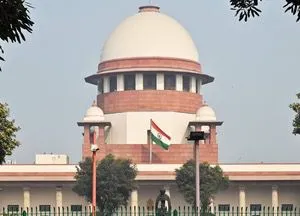The Supreme Court is set to hear on Monday a public interest litigation (PIL) relating to control of air pollution in the national capital.
As per the cause list published on the website of the apex court, a bench of Justices Abhay S. Oka and AG Masih will take up the matter for hearing on October 14.
In the previous hearing, the top court raised eyebrows over the collection of nominal compensation from farmers burning paddy stubble.
Noting that not a single prosecution case was launched over stubble burning, the Supreme Court pulled up the Commission for Air Quality Management (CAQM) for not making any efforts to implement its directions.
Following the top court’s rebuke, the CAQM recently issued a directive empowering District Magistrates in Punjab, Haryana, and NCR areas of Uttar Pradesh and Rajasthan to prosecute officials for inaction on stubble burning enforcement.
Further, it decided to depute 26 Central teams to the hotspot districts in Punjab and Haryana to maintain close liaison with the district-level authorities, besides setting up a “Paddy Stubble Management Cell” at Chandigarh, for coordinated and continuous monitoring of the field level actions.
The CAQM was set up in 2020 for air quality management in the National Capital Region (NCR) and adjoining areas for better coordination, research, identification, and resolution of problems surrounding the air quality index.
Earlier, the Supreme Court had said that the CAQM “needs to be more active” to combat the menace of air pollution in the national capital and adjoining areas.
It had said that “the Commission has not performed the way it was expected to perform considering the object for which it was set up.”
“We are of the view that though the Commission has taken certain steps, the Commission needs to be more active. The Commission must ensure that its efforts and directions issued actually translate into reducing the problem of pollution,” it had said.
Every year, Delhi and the entire NCR have to bear the brunt of air pollution from October to December mainly due to crop residue burnings.
